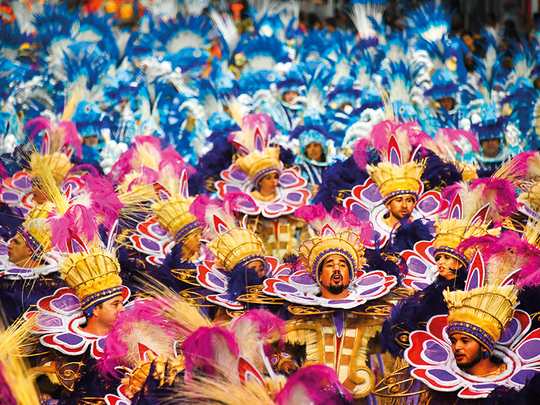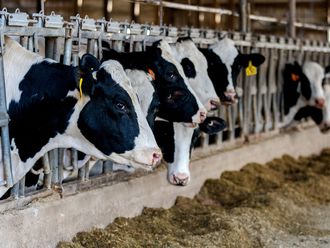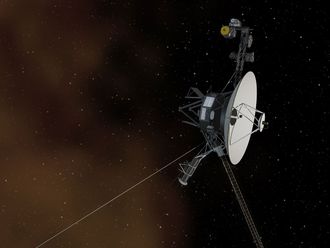
Rio de Janeiro: Rio’s vast annual street celebration features copious amounts of sparkling microplastics that find their way into the marine food chain
With Rio’s enormous carnival in full swing, the streets are full of revellers in colourful fancy dress, thronging the city’s many samba street parties. And among the looks, there is one carnival constant: multicoloured glitter smeared over bare skin.
But now worries over glitter’s damaging environmental impact are dampening the mood at the world’s biggest party.
Concern is growing about the impact the tiny pieces of plastic — called microplastics — have on marine life. Last year the UK’s Tops Days Nurseries Group banned glitter in a pre-Christmas drive and scientists called for it to be banned.
But while new “sustainable glitter” products are finding favour in Brazil with environmentally conscious carnival-goers, poorer Brazilians complain they are too expensive. Other carnival-goers say they are reducing their glitter consumption — but not cutting it out.
At a Rio street party, known as a bloco, Angelica Nobrega, 37, wore non-sustainable glitter on her cheeks and said she was sceptical about environmental concerns.
“It is just one more thing to make the lives of Brazilians more difficult,” she said. “I think they are making it up.”
Felipe Gusmao, an adjunct professor of biodiversity and conservation at the Federal University of Sao Paulo’s Marine Science Institute in Santos, said the problem with glitter is that it is usually made of microplastics, which are less than five millimetres in size and impossible to remove from the environment.
“Imagine the amount of glitter that is used in carnival, it’s amazing,” he said. “We use it, we wash it and it goes straight to the water. That’s the biggest problem.”
Although the damage from glitter itself is unknown, he said, there is evidence that microplastics have the potential to have a negative impact on marine life. Contaminants tend to stick to these tiny pieces of plastic which get into the food chain.
“We have studies showing the impacts of microplastics from the cellular level to the ecosystem level,” Gusmao said.
And that includes human beings.
“Tiny animals at the base of the marine food chain can eat these particles, and both microplastics and their associated contaminants can be transferred to the animals up in the marine food chain,” he said. “Humans are at the top of the food chain, so both microplastics and the contaminants can potentially reach us.”
To counter this, several kinds of “sustainable glitter” are now on the market.
Maira Inae and Noemi Puig are the entrepreneurs behind a make-up line called Glitra, made of eucalyptus cellulose, wax and natural oils.
“People don’t know that glitter is made of microplastics,” Inae said. “This is a problem all over the world.”
She was inspired by attending the Burning Man music and arts festival in the Nevada desert. Festival-goers take everything home with them afterwards and the festival prohibits glitter and sequins.
But at £12 ($17) for an 8-gram recyclable tin of Glitra in shops (or £10 online), the product is much more expensive than common glitter, sold in central Rio for as little as £6.50 a kilo.
“Sustainable alternatives are necessary,” said Gabriela Cunha, 32, a journalist at a cable television channel, as she applied non-sustainable glitter before a street party in central Rio. “But at this carnival, the alternatives on the market are too expensive.”
Instead, she was reducing her glitter consumption. “It is just for today,” she said.












